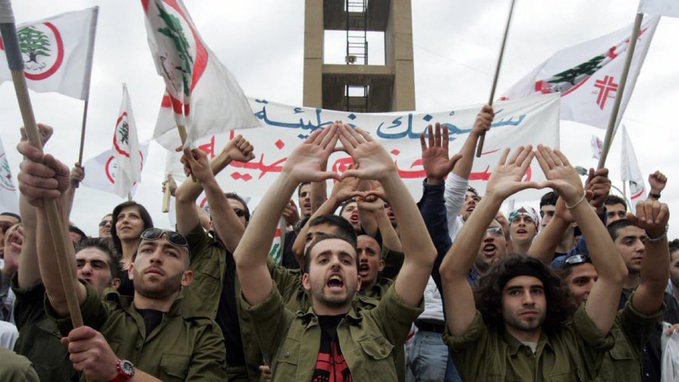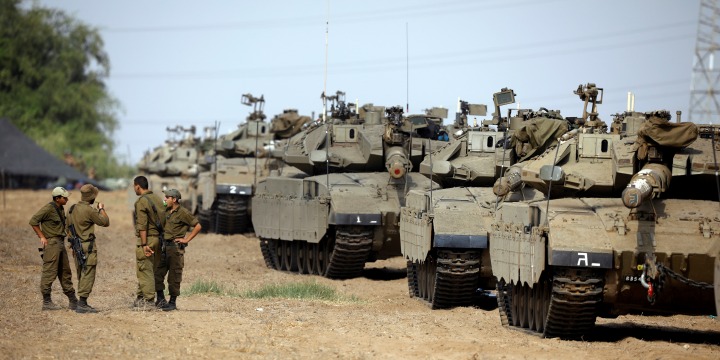The recent surge in violence between Israel and Hezbollah has plunged Lebanon into a new phase of insecurity, further complicating an already volatile situation. With massive Israeli airstrikes targeting between 50 and 70 sites across Lebanon in just 20 minutes, the potential for a wider conflict looms large. Compounding these tensions is the deployment of US naval forces across the Middle East, raising critical questions about Lebanon’s security landscape, regional implications, and the potential for further conflict.
An Overview of Airstrikes
In a dramatic display of military might, the Israel Defense Forces (IDF) launched extensive airstrikes across Lebanon, marking a significant escalation in their ongoing conflict with Hezbollah. The rapid deployment of force—striking multiple targets in such a short time—indicates a strategic shift in Israel’s approach to dealing with threats emanating from its northern neighbor.
The IDF’s operations focused on strategic Hezbollah positions, including weapons depots and command centers. These airstrikes have prompted widespread fear and uncertainty among the Lebanese population, already grappling with the impacts of political instability and economic collapse.
Israeli-Lebanon War: An Imminent Reality?
As tensions continue to escalate, the specter of an all-out war between Israel and Lebanon appears increasingly plausible. The Israeli government’s military operations have raised alarms about a potential ground incursion, with the IDF issuing warnings to civilians in northern Israel to remain vigilant. The escalation has led many to ask: Is a new Israeli-Lebanon War on the horizon?
A ground invasion would dramatically alter the security landscape in Lebanon, leading to widespread destruction and further destabilization. Hezbollah’s formidable military capabilities would likely result in fierce resistance, resulting in high casualties on both sides. The implications for regional stability could be dire, drawing in neighboring countries and international actors.
The Role of US Naval Forces
Adding another layer of complexity to the situation is the deployment of US naval forces across the Middle East. This military presence is designed to bolster regional security and deter Iranian influence, but it also heightens the potential for confrontations between various actors involved in the conflict.
The US Navy’s deployment includes advanced warships equipped with missile defense systems and surveillance capabilities. This strategic positioning allows the US to respond rapidly to any escalation in hostilities, but it also serves as a provocative signal to Iran and its allies in the region. The potential for miscalculation in such a charged environment raises significant security concerns.
The Security Landscape in Lebanon
Lebanon has long been a theater for regional power struggles, with various factions vying for influence. The presence of Hezbollah, a powerful militia with significant political clout, complicates the security situation. Formed in the early 1980s in response to Israeli invasions, Hezbollah has evolved into a formidable military force, often acting independently of the Lebanese government.
The Lebanese Armed Forces (LAF) find themselves in a precarious position. While they strive to maintain order and sovereignty, the LAF is significantly outgunned by Hezbollah. The dissonance between the state military and the armed militia poses severe challenges to governance and security.
Israeli Concerns: A Broader Context
Israel’s military actions in Lebanon are driven by a complex set of security concerns. The Israeli government views Hezbollah as a terrorist organization and a direct threat to its national security. With the ongoing conflict in Syria and Iran’s support for Hezbollah, Israel perceives an increasing risk of coordinated attacks against its territory.
The recent airstrikes are also a response to increasing hostilities along the border. Incidents of cross-border fire and the smuggling of advanced weaponry into Lebanon have heightened Israeli fears of a more significant military engagement. The situation is exacerbated by Israel’s broader strategy to deter Iranian influence in the region, which is perceived as a threat to its stability.
The Human Cost of Conflict
As military operations intensify, the civilian population in Lebanon bears the brunt of the violence. Airstrikes disrupt daily life, leading to casualties and displacement. Hospitals and emergency services are overwhelmed, struggling to cope with the influx of injured civilians.
The psychological toll on the population is immense. Years of conflict have already left deep scars on the Lebanese psyche, and the renewed violence only serves to exacerbate feelings of anxiety and fear. The potential for widespread unrest looms large, particularly among communities that have historically faced the brunt of military actions.
Hezbollah’s Response: A Calculated Strategy
Hezbollah’s response to Israeli airstrikes is critical in shaping the conflict’s trajectory. The militia has vowed to retaliate against any aggression, with leaders frequently calling for resistance against Israeli incursions. Hezbollah’s extensive network of tunnels and fortified positions suggests it is prepared for a prolonged conflict if necessary.
Furthermore, the political landscape in Lebanon influences Hezbollah’s strategy. The group enjoys significant popular support, particularly among Shiite communities, which bolsters its legitimacy. Any perceived weakness in responding to Israeli attacks could undermine its standing, prompting it to engage in retaliatory strikes.

Regional Implications: A Wider Conflict?
The conflict in Lebanon does not exist in a vacuum. The potential for escalation involves numerous regional players, including Iran, Syria, and various Palestinian factions. Iran’s support for Hezbollah provides the group with advanced weaponry and training, heightening tensions between Israel and Iran.
The US naval deployment adds another layer of complexity to this already fraught situation. The presence of American military assets may embolden Israel to pursue more aggressive strategies, knowing that they have the backing of US forces. Conversely, Iran could see the US presence as a direct threat, prompting it to strengthen its military alliances and support for groups like Hezbollah.
A broader regional conflict could emerge if the situation deteriorates further. Israel has already engaged in military actions against Iranian positions in Syria, and a spillover of hostilities into Lebanon could provoke Iranian retaliation. The precarious balance of power in the region is at stake, with the potential for a multi-front conflict that could involve various state and non-state actors.
International actors play a crucial role in shaping the security dynamics in Lebanon. The United Nations Interim Force in Lebanon (UNIFIL) has been deployed to maintain peace along the Israel-Lebanon border. However, the effectiveness of UNIFIL is often questioned, particularly in light of its limited mandate and lack of enforcement power.
Diplomatic efforts from countries such as the United States and France are vital in mediating tensions between Israel and Hezbollah. However, the effectiveness of these interventions is often hampered by the complex political realities on the ground.
Seeking Stability Amidst Chaos
Finding a path toward stability in Lebanon requires a multifaceted approach. Dialogue among Lebanese political factions is essential to address internal divisions and restore governance. Strengthening the capabilities of the Lebanese Armed Forces, while ensuring they can operate independently of Hezbollah, is crucial for restoring state authority.
International support for Lebanon’s economic recovery is equally important. Addressing the country’s dire economic situation can help alleviate some of the tensions and grievances that fuel conflict.
A Fragile Security Landscape
The recent Israeli airstrikes on Lebanon, coupled with the deployment of US naval forces in the region, signify a dangerous escalation in an already volatile security environment. The interplay between military operations, political instability, and regional dynamics poses significant challenges for Lebanon’s future.
As the situation continues to evolve, the need for diplomatic engagement and a comprehensive approach to conflict resolution has never been more urgent. The stakes are high, not just for Lebanon but for the broader region, as the potential for a wider conflict looms. Addressing the root causes of instability and fostering dialogue among all parties involved is essential for paving a path toward lasting peace and security in Lebanon.



